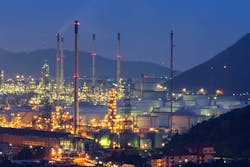Some topics are just too enticing to pass up. Every school boy and many of us well past school age let loose with a chuckle when we hear the term cow flatulence. So it’s not a stretch to imagine that reports about the beneficial use of renewable natural gas from dairy digesters are difficult to extol with an entirely straight face. Why? Well, two reasons. First, it is a bit humorous, to some of us at least, when we hear about harnessing the power of cow poop to create a carbon-negative natural gas fuel. Second, it really is a good, smile-worthy thing when we learn innovative folks are finding new ways to create useful products from what would otherwise be a problematic waste material. Let’s unpack this topic a bit, because there are useful points for power and energy advocates.
Before discussing the technology, is anyone confused by the term carbon-negative natural gas? You’re not alone. The last time I had chemistry, natural gas was made up of various hydrocarbons such as methane, ethane and other saturated hydrocarbons. So renewable natural gas is not made up of a chain of carbon molecules? Well, it is, but carbon neutrality can be “earned” by offsetting natural gas combustion emissions using carbon offsets; that is, reducing carbon emissions elsewhere. Therefore, one way to create carbon-negative natural gas would be to create or procure more offsets than the equivalent amount of fuel being consumed. Another argument may be that renewable gas or gas produced by a waste digestion process is preventing emissions from the natural breakdown of manure as well as displacing the use of conventional natural gas, thereby achieving a greater than 1 to 1 offset. Ok, I’m not 100% sure I understand carbon-negative natural gas. I may need a tutor (pronounced the same as something else boys snicker about}.
We’ll now turn to the technology or process of waste digestion. Renewable natural gas or biogas has been created by waste digestion and beneficially used for many years. It can be produced from dairy manure; crop, food and landfill waste; wastewater and other sources. Before greenhouse gas emissions were a major focus, waste digestion was employed in the wastewater treatment business to reduce the amount of waste byproducts, reduce odor, create a cleaner final effluent and produce biogas primarily for consumption within the wastewater treatment facility. Today, we also know that biogas, which is primarily methane, is a powerful greenhouse gas, so capturing and using it has an added benefit.
Waste digestion may involve a biological or a chemical decomposition process and may be aerobic or anaerobic (with or without oxygen). In the case of dairy digesters and the anaerobic digesters used in municipal wastewater treatment, the organic material in the waste stream is broken down by microorganisms in the absence of oxygen. The byproducts include biogas composed primarily of methane, carbon dioxide and an inert sludge. The biogas may be used in the treatment process to provide heat for the digester tanks or as fuel for a combined heat and power (CHP) unit. An additional option for the biogas is a conditioning step to ensure it meets the moisture, solids and BTU requirements for injection into a conventional natural gas pipeline network as renewable natural gas (RNG).
Whether treating cow waste or people waste, the process is energy intensive. The NREL has reported that water and wastewater systems consume an estimated 3%-4% of total U.S. electricity consumption. Nonetheless, similar to the potential being exploited with dairy waste, the Water Environment Research Foundation believes that wastewater and its associated biosolids/biogases exceed by 10 times the energy used to treat it. The problem is that initial capital cost, insufficient scale and sometimes public acceptance are preventing more treatment facilities from extracting the energy from their waste streams. Dairy and other livestock farmers are joining forces to create the scale needed to implement biogas recovery operations. Are there similar possibilities for wastewater treatment operators?
We began this gassy montage with a smile. There is reason to end with one as well. The U.S. DOE believes that wastewater facility modifications can achieve 30% to 50% in energy savings. Available resources from several agencies suggest there are ample opportunities for electric utilities to assist their municipal and private water and wastewater customers with evaluating their systems for motor retrofits, conservation and efficiency measures, and energy data management improvements (see https://www.energy.gov/eere/slsc/wastewater-infrastructure and https://www.epa.gov/aboutepa/about-office-water#wastewater.)
Read more about RNG here.
About the Author
David Shadle
Grid Optimization Editor
Dave joined the T&D World team as the editor of the Grid Optimization Center of Excellence website in January 2016.
Dave is a power industry veteran with a history of leading environmental and development organizations, championing crucial projects, managing major acquisitions and implementing change. Dave is currently a principal at Power Advance, LLC, an independent consulting firm specializing in power project development, research and analysis, due diligence and valuation support. Dave is also a contributing consultant for Transmission & Distribution World. Prior to Power Advance, Dave held business and power project development positions with The Louis Berger Group, Iberdrola Renewables, FPL Energy and General Public Utilities. He is a graduate of Pennsylvania State University, the New Jersey Institute of Technology and Purdue University.
